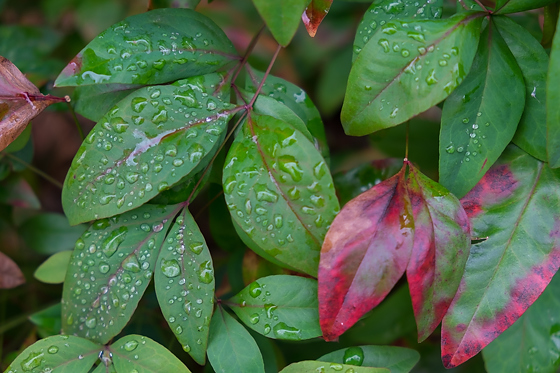 |
| Nikon D3, AF-S NIKKOR 28-300mm f/3.5-5.6G ED VR, ISO 1000, ƒ/8, 1/2000 |
I just thought I would share some of my favorite sports images that I now have in my most recent "Sports Portfolio."
This first photo is of Kerri Walsh spikes the volleyball against Jenny Krop & teammate Nancy Mason in the 3rd round of the Women's $100,000 AVP Crocs Tour at Atlantic Station in Atlanta.
 |
| Nikon D5, Sigma 120-300mm ƒ/2.8 DG OS HSM S, Sigma TC-2001 2x, ISO 36000, ƒ/5.6, 1/4000 |
Georgia Bulldog's #2 Defensive Back Maurice Smith breaks up the pass to North Carolina Tarheel's #3 Ryan Switzer in their win over UNC 33 to 24 during the Chick-fil-A Kickoff game at the Georgia Dome.
What I love about the photo is there is an anticipation of the big play and we see both the offense and defense in a very competitive and athletic moment. Both players appear to be giving it their all in the moment.
 |
| Nikon D5, Sigma 120-300mm ƒ/2.8 DG OS HSM S, Sigma TC-2001 2x, ISO 45600, ƒ/5.6, 1/4000 |
Georgia Bulldog's Freshman Running Back #35 Brian Herrien Scores his very first collegiate touch down while UNC's Safety #15 Donnie Miles was unable to stop him during tonights Chick-fil-A Kickoff Game at the Georgia Dome.
I love the effort made by both the teams in the moment of competition. This is what the game is all about, getting a touchdown and defending all wrapped up in a split second.
 |
| Nikon D100, Sigma 120-300 mm f/2.8 DG EX APO IF HSM, ISO 1600, ƒ/2.8, 1/350 |
Jaron Nunnemaker attempts to ride Hot Rod during the 2004 RBR Atlanta Classic at the Georgia Dome.
Bull Riding is the wildest and most dangerous event in rodeo. In the American tradition the rider must stay atop the bucking bull for eight full seconds to count as a qualified ride. The rider tightly fastens one hand to the bull with a long braided rope. It is a risky sport and has been called "the most dangerous eight seconds in sports."
 |
| Nikon D5, Sigma 120-300mm ƒ/2.8 DG OS HSM | S, ISO 64000, ƒ/2.8, 1/2000 |
The bulls are rated and even more famous in many ways than the cowboys who ride them. This bull here had 27 consecutive buck offs, now that is 28. A cowboy must stay on the bull 8 seconds for the ride to count. Then they get a score which takes into account the bull they are riding.
 |
| Nikon D5, Sigma 120-300mm ƒ/2.8 DG OS HSM | S, ISO 64000, ƒ/2.8, 1/2000 |
Every once in a while when a bull is determined unrideable the Professional Bull Riders Association has a million dollar ride. At $125,000 per second, this bonus ride is offering one of the largest payouts any athlete has ever received for the amount of time they are required to compete. In comparison, Dallas Cowboys quarterback Tony Romo received roughly $12 million dollars to play in 15 NFL games in 2013. At 54,000 seconds per season, it took Romo 4,500 seconds to make $1 million.
 |
| Nikon D100, Sigma 15-30mm, ISO 400, ƒ/6.7, 1/180 |
Georgia Tech's #1 B. J. Elder lays up and passes Duke's #2 Luol Deng during second half play at the Alexander Memorial Coliseum in Atlanta, Georgia.
I love basketball and for those teams that take it to the net this is my favorite place to photograph. You get to see the effort in the face expressions and how close they are to either making the basket or defending it.
 |
| Nikon D100, Nikon 24-120mm ƒ/3.5-5.6, ISO 400, ƒ/6.7, 1/180 |
Georgia Tech's #2 Isma'il Muhammad slams one early over NC State's #11 Gavin Grant during play at the Alexander Memorial Coliseum in Atlanta, Georgia.
This is one of those photos most players either love or hate. Love that Isma'l flew over the NC State player Gavin for a slam. It made the ESPN highlights during that week and was played over and over. When Isma'l graduated the coach had a large print made and gave it to him.
 |
| Nikon D2X, Sigma 120-300 mm f/2.8 DG EX APO IF HSM, Sigma 2x, ISO 400, ƒ/5.6, 1/3000 |
Mike Trapani is chased down by Chris Campbell and finally tagged out by Nick Chigges of the College of Charleston during play at the Russ Chandler Stadium in Atlanta, Georgia.
I love the steal in baseball and if I am in the right position as here can capture the effort of both offense and defense as they both are trying to advance a base or stop it.
 |
| Nikon D2X, Nikon 24-120mm ƒ/3.5-5.6, ISO 100, ƒ/16, 1/200–[6] Alienbees B1600 |
Sometimes my favorite moments were when I made the team photo that would help sell tickets for the season. Seeing this photo on the side of buses around town to promote Calvin Johnson and the rest of the Georgia Tech Yellow Jackets 2006 season was a pleasure.
Hope you enjoyed some of the moments in sports of mine through the years.























































